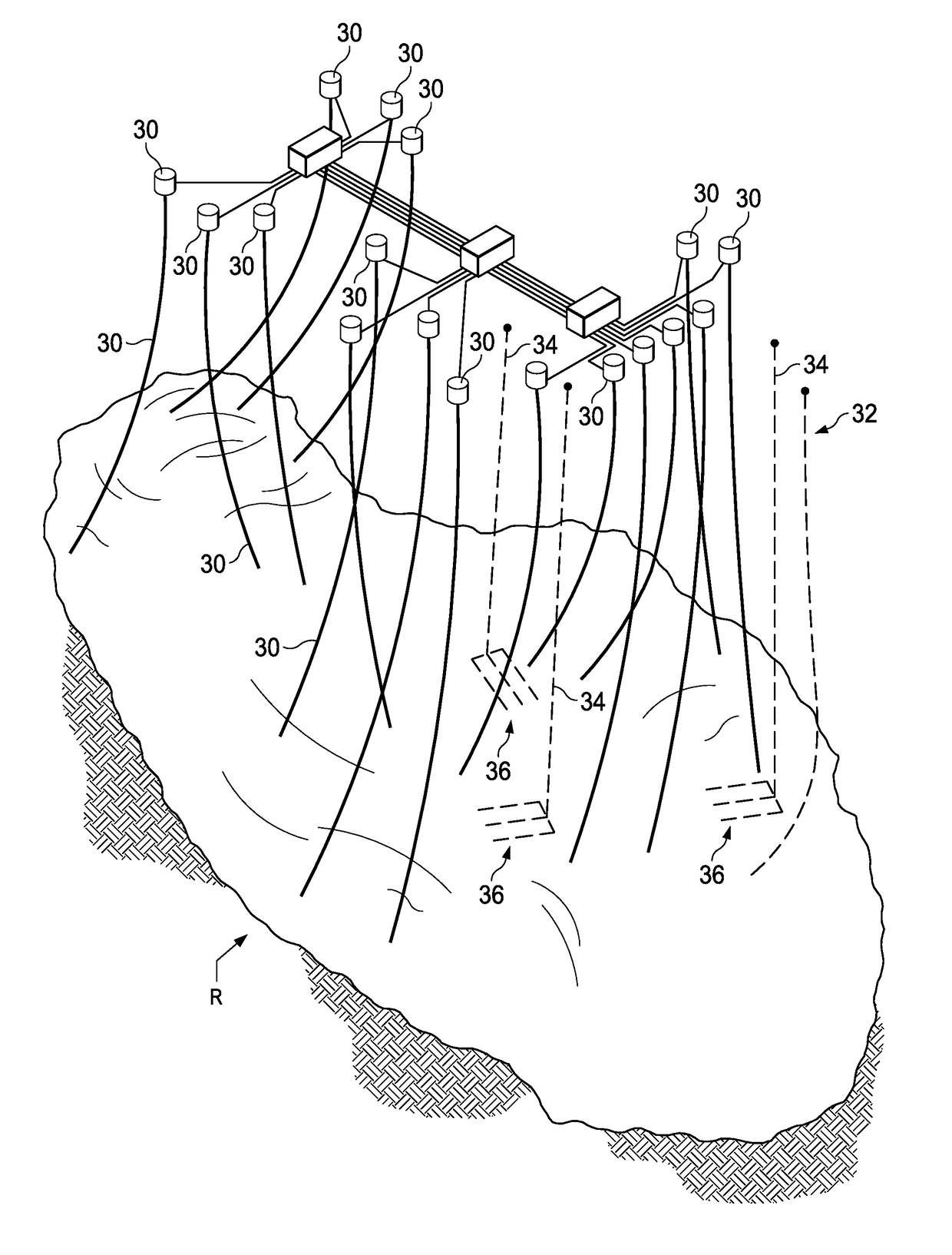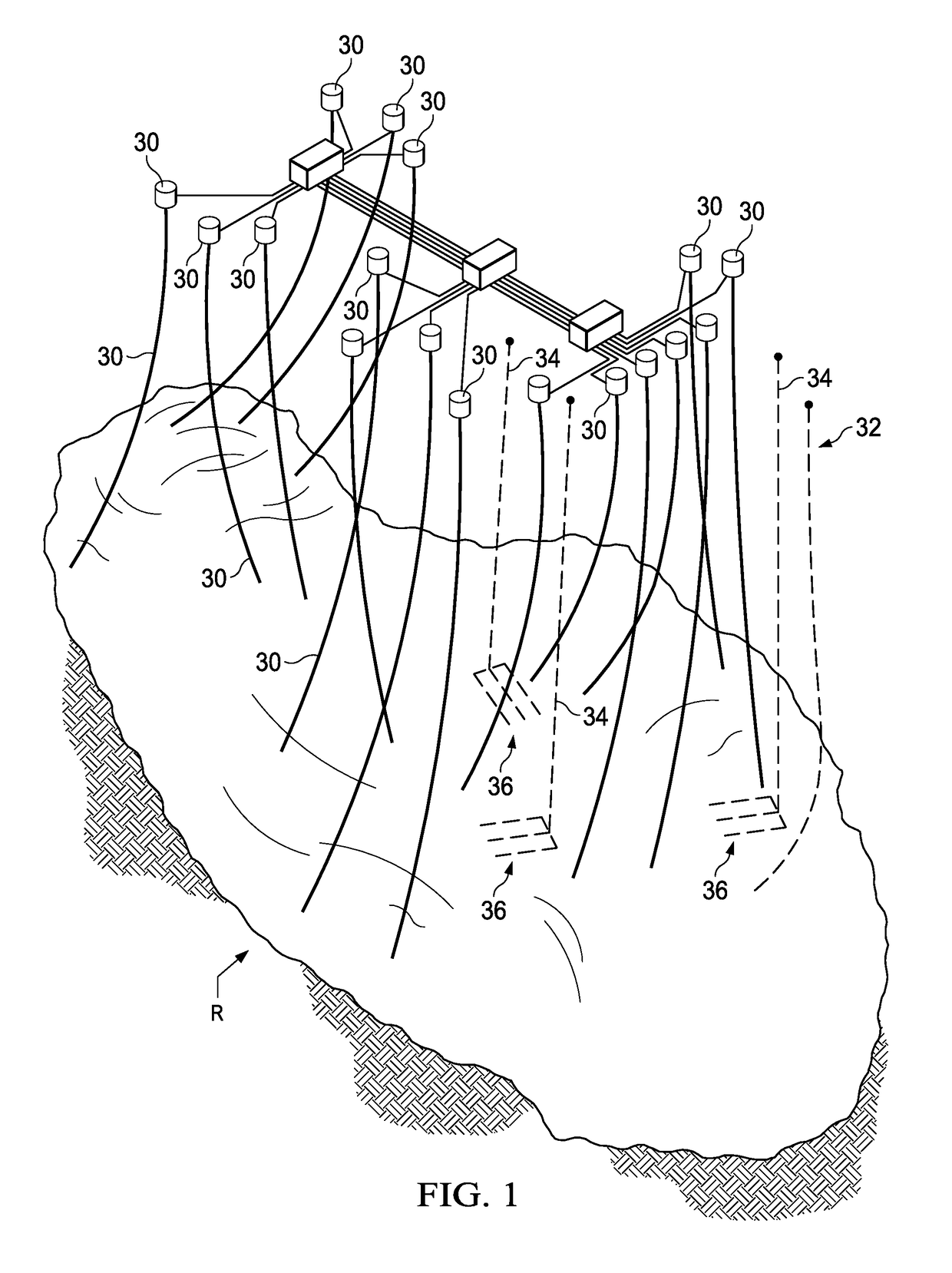Well performance classification using artificial intelligence and pattern recognition
a technology of pattern recognition and well performance, applied in the direction of probabilistic networks, instruments, borehole/well accessories, etc., can solve the problems of large reservoir complex geology, large computerized reservoir simulation runs, and large time-consuming and computer resource-intensive techniques
- Summary
- Abstract
- Description
- Claims
- Application Information
AI Technical Summary
Benefits of technology
Problems solved by technology
Method used
Image
Examples
Embodiment Construction
[0025]For the recovery of oil and gas from subterranean reservoirs, wellbores are drilled into these formations for the recovery of hydrocarbon fluid. At times during the production life of such a reservoir, it is necessary to plan for additional wells for the reservoir and assess the potential effects on the reservoir of adjustments to either production or injection of the existing wells in the reservoir. In such situations, it is necessary to classify the performance of production from wells based on well properties, geology, and fluid flow.
[0026]In the drawings, FIG. 1 illustrates an example placement of a number of existing wells 30 drilled into a portion of a large reservoir R. The reservoir R is usually of the type and size exemplified by the model M of FIG. 1 is usually one which is known to those in the art as a giant reservoir. A giant reservoir may be several miles in length, breadth and depth in its extent beneath the earth and might, for example, have a volume or size on...
PUM
 Login to View More
Login to View More Abstract
Description
Claims
Application Information
 Login to View More
Login to View More - R&D
- Intellectual Property
- Life Sciences
- Materials
- Tech Scout
- Unparalleled Data Quality
- Higher Quality Content
- 60% Fewer Hallucinations
Browse by: Latest US Patents, China's latest patents, Technical Efficacy Thesaurus, Application Domain, Technology Topic, Popular Technical Reports.
© 2025 PatSnap. All rights reserved.Legal|Privacy policy|Modern Slavery Act Transparency Statement|Sitemap|About US| Contact US: help@patsnap.com



